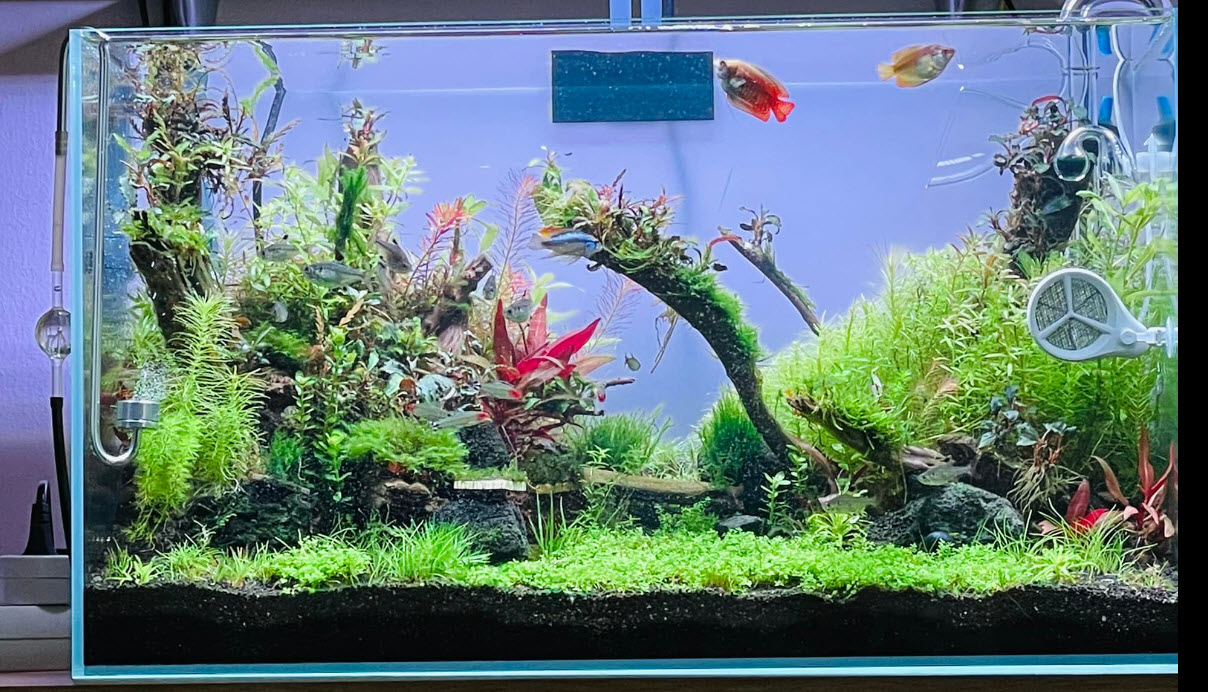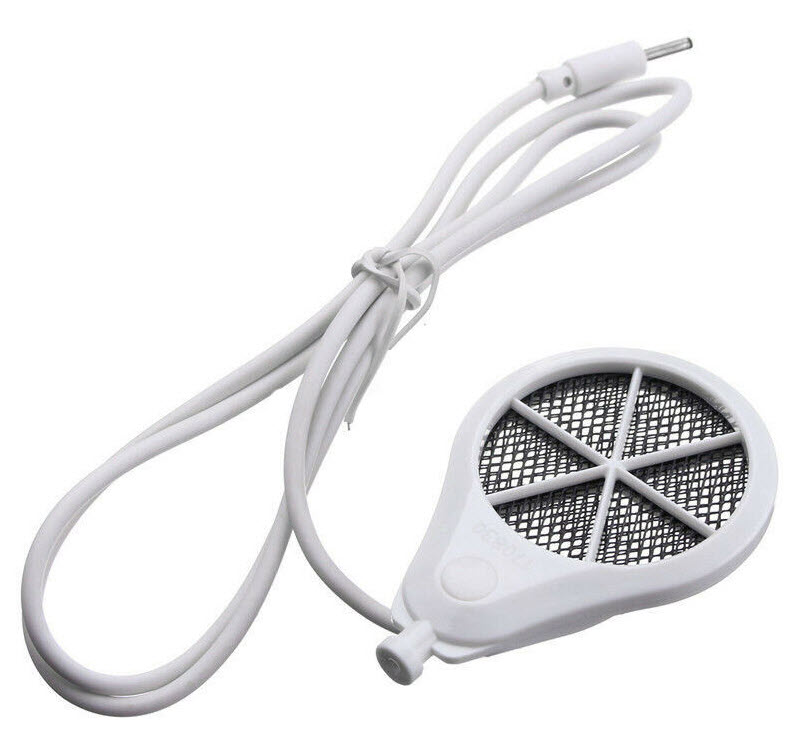
Many planted aquarium photos from Europe show a little fan-like device in one corner. These are the “Chihiros Doctor” (the Twinstar Unit is very similar and does the same thing). The units are somewhat expensive ($73 to $110). This device supposedly controls algae. This device is nothing more than a “sneaky” way to use chemicals (namely hydrogen peroxide) to control algae. The device uses an electric current to generate what is basically hydrogen peroxide from water. And it has all the same problems that ALL algae chemical control methods have.

The “Chihiros Doctor” has some electrode wires in a fan-like arrangement. A current is passed from one set of wires to the other set of wires. This current produces largely hydrogen at one electrode and oxygen at the other electrode.

Some small portion of the oxygen is not present as bubbles of diatomic (O2, two atoms to a molecule). Rather this portion of the oxygen is present in the solution as monoatomic oxygen (a single atom of oxygen). This monoatomic oxygen can take a whole series of forms and is called many things. These names include “active” oxygen, monoatomic oxygen, hydroxyl radicals, oxygen radicals, “nascent” oxygen, and free radical oxygen. We’ll use the term hydroxyl radicals.
This is the equation that describes what happens when the hydroxide portion of the water molecule gives up an electron at the electrode of the Chihiros Doctor:

And in some cases this even produces hydrogen peroxide:

These hydroxyl radicals are disinfectants. They denature any protein they encounter. When they get inside ANY cell, they can kill it. Algae have thinner cell walls than vascular plants, so they are killed more easily by the hydroxyl radicals. Unfortunately, the cells of the gills of the fish are even more sensitive than algae.
I cannot recommend these devices for any aquarium with fish in it. Slowly killing the cells in the gills of a fish is never a good idea. Putting this device in a plant-only aquarium is probably harmless and is probably a good way to waste money if you have a lot to spare. The device looks real space-age techie and gets a lot of comments.
But the fine hydrogen and oxygen bubbles this device produces float around the aquarium in a very distracting way.

Hydroxyl radicals can be produced at least four ways in an aquarium:
- The Chihiros Doctor or the Twinstar can produce them by electrolysis
- One can use a dosing pump to put small amounts of hydrogen peroxide into the aquarium
- One can use a dosing pump to put small amounts of potassium permanganate into the aquarium
- One can use a device called a Söchting “Oxydator”
ALL these four methods produce the same thing, namely hydroxyl radicals in the water. For all intents and purposes they are all equally bad.

Söchting “Oxydator”
The Söchting “Oxydator” is a device out of Germany that supposedly supplies an aquarium with “activated oxygen”. The device works by filling a container with hydrogen peroxide and sealing it with a special lid device. The container is then inverted in the tank. The lid, which is now the bottom of the container, has a small catalyst (probably a ferro-aluminosilicate) in it which very slowly decomposes the hydrogen peroxide and forms gaseous oxygen.
This oxygen gas rises in the container and displaces the hydrogen peroxide slowly over a two to four-week period. The displaced hydrogen peroxide very slowly exits into the aquarium. The displaced hydrogen peroxide then reacts with proteins in living things in the aquarium as the antiseptic that it is. It does the same thing as the Chihiros Doctor.

Marketing Hype
Correcting for poor translations, the marketing hype for these products is:
“The “Chihiros Doctor” is composed of a reactor, controlled by an external control unit, that releases active oxygen by electrolysis. It releases positive and negative ions and active trace elements. It acts on the water redox potential and promotes the growth of plants at the expense of the algae. Also destroys suspended algae, herpes virus, fungi, and pathogenic bacteria such as Aeromonas and E’ coli. It acts in a positive way on the skin, mucous membranes, gills, and gastrointestinal apparatus of fishes and shrimps.”
“The sterilizing factor of the Twinstar uses microbubbles to destroy the cell wall of green algae to inhibit their growth and is non-toxic and harmless to aerobic bacteria. Twinstar also promotes better aquatic plant growth by inhibition of green algae on plants.”
“Söchting Oxydators break down hydrogen peroxide into activated oxygen using a special catalyst. The activated oxygen decomposes particularly putrid matters and toxicants, thus improving the well-being of fish and plants. Due to the Oxydator’s oxidizing capacity, the water quality will be improved and harmful contaminants in the water will be neutralized. It is effective at fighting algae.”
Many will take these claims at face value. Sorry, 90% of this is simply snake oil marketing hype. One needs to be cautious here, especially with fish in the aquarium. Hydrogen peroxide kills the living cells in the gills of a fish. I cannot recommend these devices.

Effect on Iron
Any method that produces hydroxyl radicals in a planted aquarium will rapidly make any iron in the water column unavailable to plants. This will result in an iron deficiency in a planted tank. The only way around this is to add the iron to the substrate rather than the water column and to use a sand substrate. Obviously this will only work with rooted vascular plants.
More Information on Controlling Algae
There is a lot more information on how to control algae in these links:
16.2. Controlling Algae in the Aquarium
16.2.1. Controlling Algae in the Fish Only Aquarium
16.2.2. Controlling Algae in the “High-Tech” Planted Aquarium
16.2.3. Controlling Algae in the “Low-Tech” Planted Aquarium
16.2.4. Algae Eaters
16.2.5. The Algae “War”
Return to Algae Menu
.
Aquarium Science Website
The chapters shown below or on the right side in maroon lead to close to 400 articles on all aspects of keeping a freshwater aquarium. These articles have NO links to profit making sites and are thus unbiased in their recommendations, unlike all the for-profit sites you will find with Google. Bookmark and browse!
.
